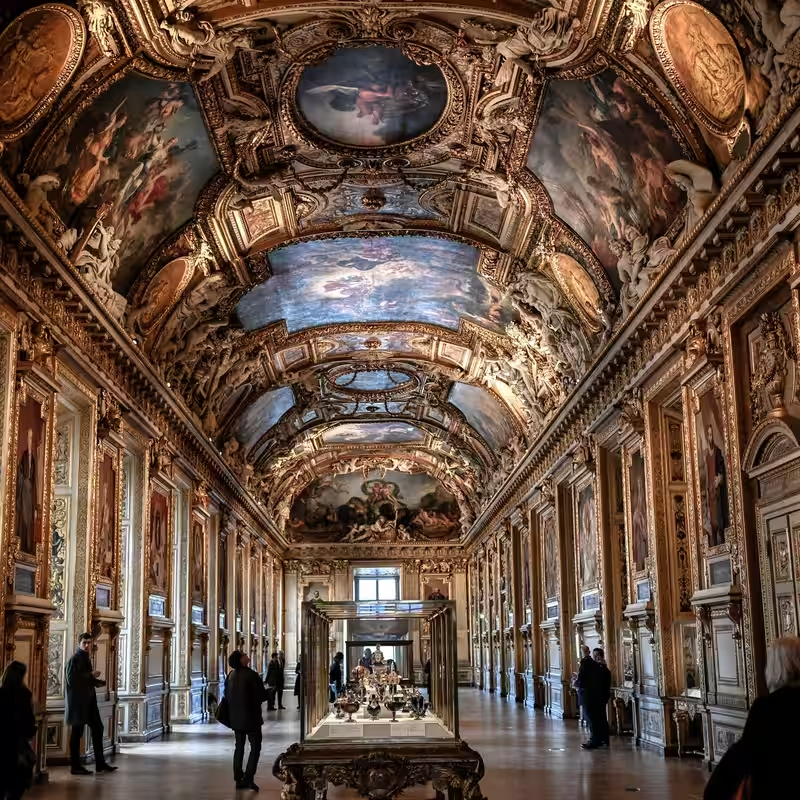Table of Contents
- Brazen Break-In Shakes the Louvre
- Why the Louvre’s History Is a Security Liability
- A Troubling History of Thefts
- Can a Palace Become a Fortress?
- Sources
Brazen Break-In Shakes the Louvre
In a stunning breach that has sent shockwaves through the art world, thieves infiltrated the Louvre Museum in Paris early Sunday morning, making off with at least one valuable artifact before vanishing into the pre-dawn streets. While officials have not yet disclosed the stolen item’s identity or value, the incident has reignited long-standing concerns about the museum’s ability to protect its treasures.
The Louvre, home to masterpieces like the Mona Lisa and the Venus de Milo, attracts nearly 10 million visitors annually. But its very grandeur—housed in a former royal palace with over 72,000 square meters of exhibition space and 35,000 works on display—makes it uniquely vulnerable. Louvre security has long walked a tightrope between accessibility and protection, and this latest theft suggests the balance may be tipping dangerously.
Why the Louvre’s History Is a Security Liability
Unlike modern museums built with surveillance, blast-resistant glass, and AI-driven threat detection, the Louvre is a labyrinth of 12th-century foundations, 16th-century wings, and glass pyramids added in the 1980s. Its historic architecture, while breathtaking, creates blind spots, outdated electrical systems, and structural limitations that complicate the installation of cutting-edge Louvre security infrastructure.
“You can’t just drill into a 400-year-old wall to run fiber-optic cables for motion sensors,” said a former French cultural heritage security consultant who spoke on condition of anonymity. “Every upgrade requires approval from historic preservation boards, which slows everything down.”
Moreover, the museum’s open layout—designed to encourage public engagement with art—limits the use of physical barriers or checkpoints that might deter or delay intruders.
A Troubling History of Thefts
This isn’t the first time the Louvre’s security has been tested:
| Year | Incident |
|---|---|
| 1911 | Mona Lisa stolen by Vincenzo Peruggia; recovered in 1913 |
| 1961 | Géricault’s Portrait of a Kleptomaniac stolen; never recovered |
| 1998 | Two men posing as police officers stole 30 antiquities |
| 2010 | Five paintings slashed with a knife in a single night |
| 2025 | Sunday’s brazen heist—details still under investigation |
Each incident has prompted reviews, yet systemic vulnerabilities persist—partly due to budget constraints and partly due to the museum’s dual identity as both a fortress of culture and a public space.
Can a Palace Become a Fortress?
Following Sunday’s breach, French authorities have launched an emergency audit of the Louvre’s security protocols. Proposals under discussion include:
- Deploying AI-powered behavioral analytics in high-traffic zones
- Installing non-invasive vibration sensors in historic walls
- Expanding the use of drone surveillance over the museum’s courtyards at night
- Creating a rapid-response art protection unit modeled after Italy’s Carabinieri Tutela Patrimonio Culturale
Still, experts warn that no system is foolproof. “The Louvre’s greatest strength—its openness—is also its Achilles’ heel,” said Dr. Élise Moreau, a cultural security analyst at Sciences Po. “You can’t turn a symbol of enlightenment into a bunker without losing its soul.”
[INTERNAL_LINK:Louvre security] remains a high-stakes balancing act—one that may require rethinking what it means to protect art in the 21st century.
Sources
The New York Times: The Louvre’s Attraction Is Its History. That’s Also Its Weakness.




